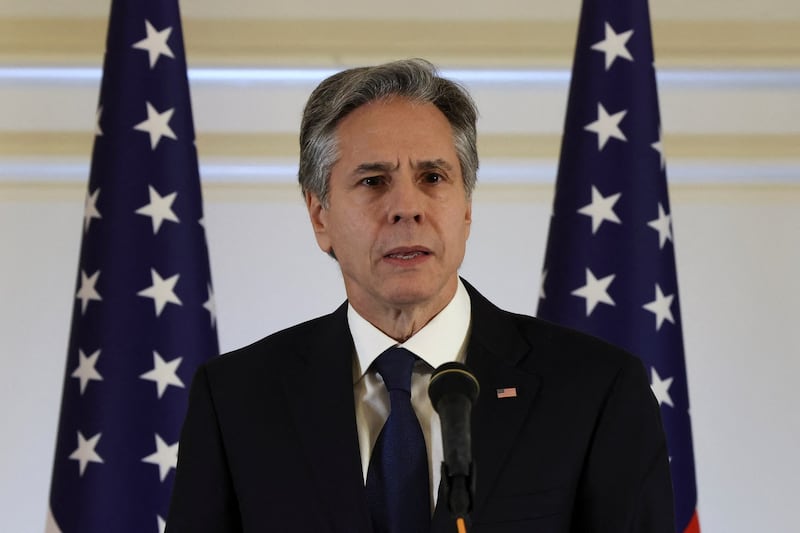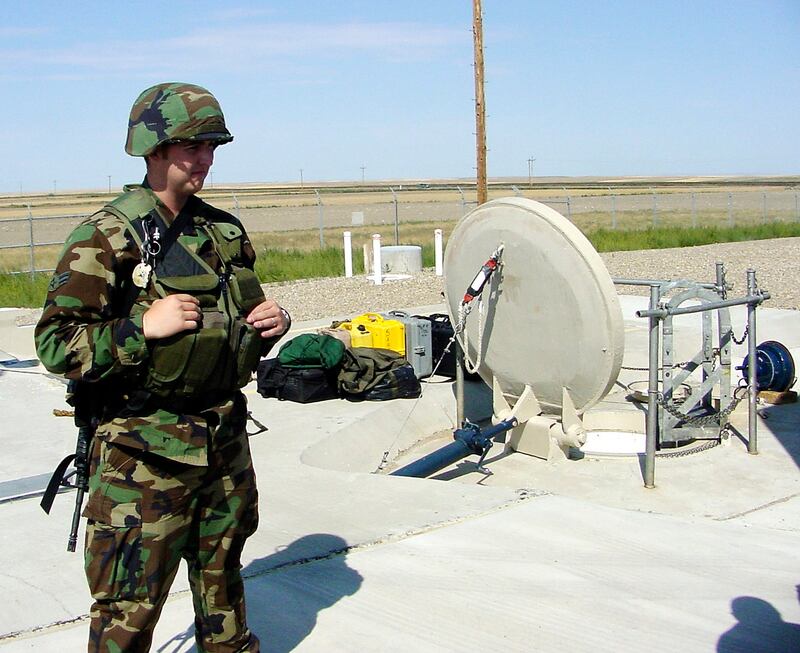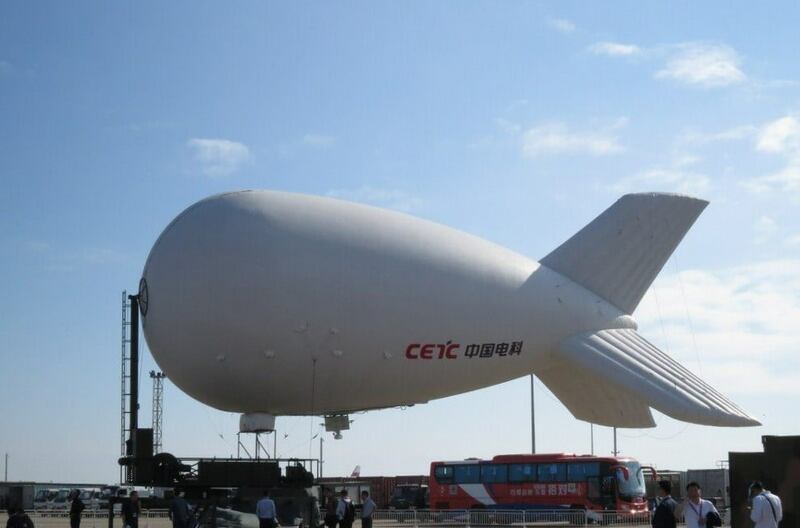UPDATED at 1:20 p.m. EST on 02/03/2023
The Pentagon said that a Chinese high-altitude balloon flying over the U.S. had the capability to conduct surveillance and was controllable, despite China's contention it is a weather-monitoring system that had simply been blown off course.
The discovery of the airship this week prompted U.S. Secretary of State Antony Blinken to postpone a planned visit to China.
"We know it's a surveillance balloon," Pentagon spokesperson Pat Ryder told reporters today. "We do know that the balloon has violated U.S. airspace and international law, which is unacceptable. And so we've conveyed this directly to the [China] at multiple levels."
Canadian defense officials said they are also monitoring a "potential second incident" in Canada and their intelligence agencies are working with American partners to "safeguard Canada's sensitive information from foreign intelligence threats."
Blinken was expected to fly to China on Friday evening. But a senior State Department official said today that the trip is being postponed in response to the discovery of the balloon flying over Montana earlier this week.
Ryder, who is an Air Force brigadier general, said that the balloon was traveling at an altitude of 60,000 feet, well above the flight patterns of commercial air traffic. He said the balloon is moving eastward and is now somewhere over the center of the continental U.S.
The U.S. had considered shooting down the balloon but has chosen not to because it did not pose a physical or military risk to people on the ground, Ryder said. Earlier, U.S. officials had said that President Biden asked for military options but was advised not to shoot the balloon down over concerns that debris could cause casualties on the ground.
"For now we're continuing to monitor and review options," Ryder said.

China's response
China's Foreign Ministry has acknowledged that the balloon is Chinese, but said it had "deviated far from its planned course" due to wind currents.
"It is a civilian airship used for research, mainly meteorological, purposes," the ministry said. "The Chinese side regrets the unintended entry of the airship into U.S. airspace due to force majeure. The Chinese side will continue communicating with the U.S. side and properly handle this unexpected situation caused by force majeure."
China said it is continuing to investigate.
"Speculation and hype are not conducive to the solution of the problem until facts are clear,” Foreign Ministry spokesperson Mao Ning said Friday, urging both sides to “handle the matter calmly and prudently."
The balloon is believed to be the size of three buses. Ryder said it had a "payload" beneath it, which he likened to the basket underneath a blimp. He said it was expected to be over the United States for another couple of days.

Angry U.S. reaction
The discovery of the balloon prompted the Billings airport to shut down on Wednesday and a number of Air Force assets including F-22 fighters were mobilized. Montana is home to Malmstrom Air Force Base, one of the most sensitive U.S. military installations, equipped with siloed nuclear weapons.
According to the Defense Department, “instances of this activity have been observed over the past several years, including prior to this administration.”
Some U.S. political figures reacted angrily to the news.
"China's brazen disregard for U.S. sovereignty is a destabilizing action that must be addressed, and President Biden cannot be silent," House Speaker Kevin McCarthy wrote on Twitter.
McCarthy, who is reportedly planning a visit to Taiwan in April, said he is “requesting a Gang of Eight briefing,” or a national security briefing for eight congressional leaders from the intelligence committees.
Republican Senator Tom Cotton called on Blinken to cancel his trip to China before that decision was announced.
The U.S.'s top diplomat had been expected to visit China on Feb. 5-6 and meet with China's president, Xi Jinping. The State Department official said the trip wasn't canceled, only postponed.
“The conditions are not right at this moment for Secretary Blinken to travel to China,” an official said today.
Relations between the two superpowers have grown more strained in recent years over security concerns, trade, the Taiwan issue and strategic competition.
‘Gray zone tactic’
Chinese high-altitude balloons are not a rare phenomenon and have been detected many times in East Asia. They appeared four times in Taiwan’s airspace in February and March last year.
A balloon with a cross-shaped object was spotted flying over the northeastern region of Japan in 2020. At that time, the Japanese Ministry of Defense said that it was closely monitoring the balloon.
The balloon in the latest Montana incident was released “probably not for the purpose of taking pictures because satellites can do that job, but to test U.S. air defense radar and collect various U.S. electronic intelligence,” said Su Tzu-yun, a military expert from Taiwan’s Institute for National Defense and Strategy Research, a government think tank.

Another military analyst said apart from surveillance, the incident is “a political irritant now that civilians are aware of it.”
“I guess we could call this another gray zone tactic,” said Alexandre Neill, adjunct fellow at Hawaii’s Pacific Forum think tank.
Gray zone activities are generally not explicit acts of war but harmful to the security of a nation.
“China is sending them through Japanese, Canadian and U.S. airspace. Should these allied countries be tolerating Chinese surveillance balloons transiting national airspace?” Neill asked.
According to Su, the U.S. military may not want to shoot the balloon down for counter-intelligence reasons.
“By observing the movements of this balloon, as well as electronic communications of the datalink they can examine the real intention of the People’s Liberation Army,” said the Taiwanese military expert, describing it as “the art of intelligence.”
In recent years, China has been developing new types of balloons and spacecraft.
The Aviation Industry Corporation of China last year registered three special-configuration hot air balloons that the manufacturer said were designed for civilian use but can also be deployed for surveillance.
For their part, U.S. companies have also been making high-altitude military-grade balloons for reconnaissance and communication purposes, especially in areas that lack satellite coverage.
Experts say balloons are cheaper than satellites and have a longer cruising time in the air. They can move slowly and observe specific areas for a long period.
Updates story to include comments from Pentagon briefing.
